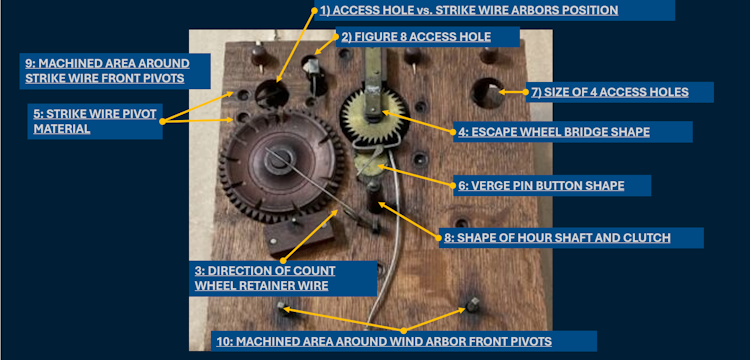Determine the Model ID of a Standard Terry-Type Movement (Model 5) - Step by Step
Based on Snowden Taylor's Chart of Terry-type 30-hour Shelf Clock Movements Images courtesy of Pat Hagans (click on images to view full size) |
|

Description of Movement Numbering System
|
||||||||||||||||||||||||||||||||||||||||||||||||||||||||||||||||||||||||||||||||||||||||||||||||||||||||||||||||||||||||||||||||||||||||||||||||||||||
Copyright Cog Counters NAWCC Chapter #194

 or any value in the row just below the slanted queries.
or any value in the row just below the slanted queries.








